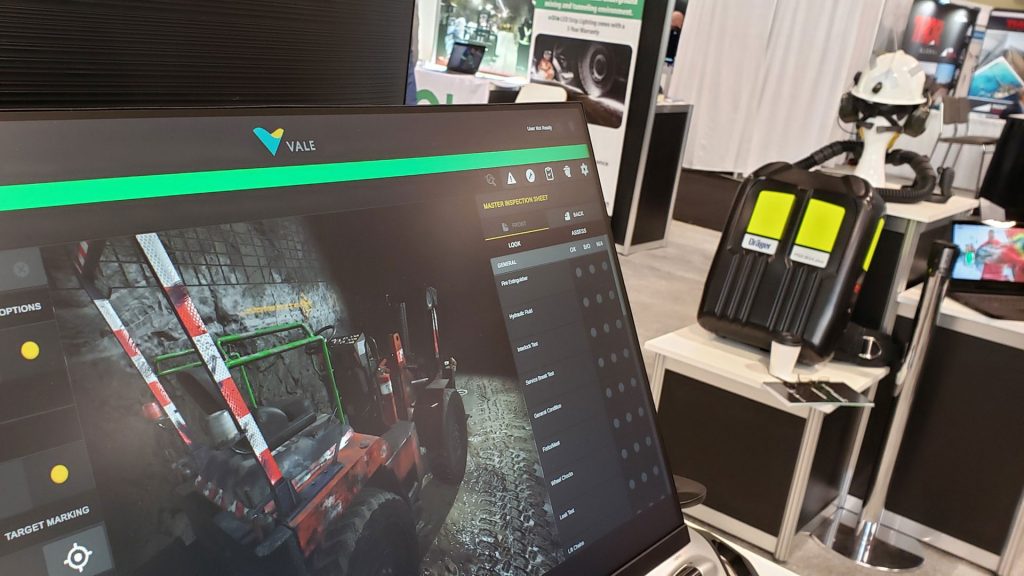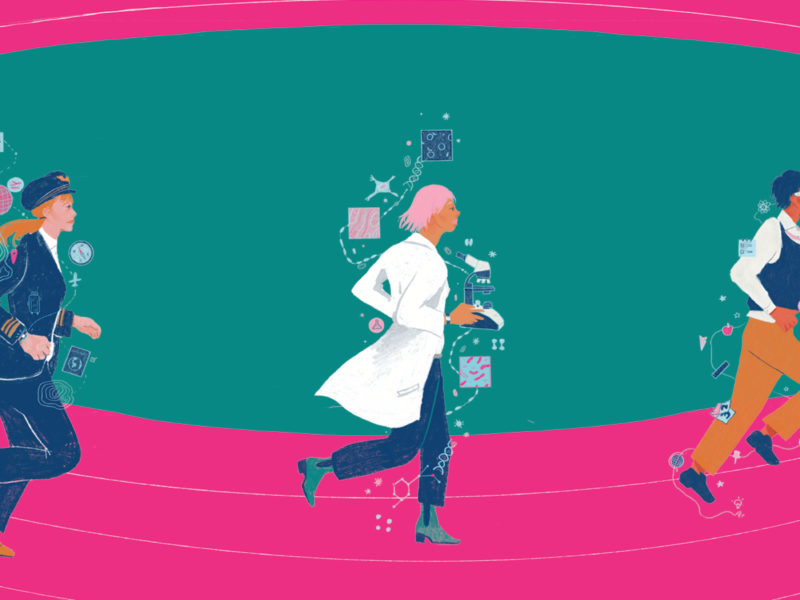Project Insights Report
Leveraging Technology to Develop Modern Mining Skills
 Executive Summary
Executive Summary
The Leveraging Technology to Develop Modern Mining Skills project, led by NORCAT with support from the Future Skills Centre, explored the potential for augmented reality and virtual reality to address labour and safety challenges in mining and construction. By incorporating simulations into core training programs, the project aimed to provide safer, more accessible practice environments for new workers while testing whether immersive tools could improve learning outcomes. The initiative also sought to engage groups historically underrepresented in these industries, including women, Indigenous Peoples and youth.
Evaluation findings showed gains in knowledge, confidence and satisfaction among trainees, and strong participation from youth, Indigenous Peoples and women. These outcomes point to the potential for immersive technologies to accelerate skill acquisition, diversify the labour pool and improve workforce readiness at scale. For policymakers and industry leaders, the project underscores the importance of investing in technology-enabled training as a strategy to boost productivity, enhance inclusion and future-proof critical sectors of the Canadian economy.
Key Insights
One hundred seventy participants completed the Hard Rock Miner training, and 145 completed the Confined Space program. The programs had strong recruitment among youth (46%), Indigenous participants (33%) and women (14%).
Immersive training can provide cost-effective, scalable and safer alternatives to traditional methods while also attracting and engaging diverse learners.
The augmented and virtual reality technologies enhanced confidence levels among trainees: only 15% of trainees felt confident operating load-haul-dump machinery at the start of training compared to 98% by the end, while fire safety confidence increased from 51% to 88%.
 The Issue
The Issue
The Leveraging Technology to Develop Modern Mining Skills project, led by NORCAT and funded by the Future Skills Centre, aimed to address pressing workforce challenges in Canada’s mining and construction industries. These sectors are experiencing significant labour shortages, with forecasts indicating the need for nearly 80,000 new mining workers by 2030 and 85,000 additional construction workers by 2033. At the same time, employers face growing demands to ensure worker productivity and safety in environments that are inherently high-risk and technically complex.
Traditional training methods, while valuable, present critical limitations. They rely on expensive equipment, restrict access to real-world practice, and cannot safely simulate the breadth of hazardous situations workers may encounter. These constraints hinder new workers, particularly those with limited prior exposure to mining and construction. Moreover, the mining and construction industries have historically struggled to attract and retain underrepresented groups, including women, Indigenous Peoples and youth, despite recognizing the need to diversify and expand the labour pool.
Augmented reality and virtual reality technologies allow learners to practise in realistic but controlled environments, build muscle memory for hazardous scenarios and gain confidence before entering active mine sites. This approach not only strengthens safety and skill development but also supports recruitment of a more diverse workforce, aligning with broader industry and policy goals for long-term sustainability.

 What We Investigated
What We Investigated
To address these workforce gaps, the project aimed to integrate augmented reality and virtual reality into training programs such as NORCAT’s Hard Rock Miner Common Core and Confined Spaces training. These technologies were designed to provide immersive, hands-on and safer training environments that could increase skill development, worker confidence and engagement.
The project integrated several augmented reality and virtual reality learning tools into training programs. These included:
- a virtual reality pre-operational inspection tool for mining vehicles (e.g., load-haul-dump, forklift, scissor lift);
- an augmented reality fire extinguisher simulator for fire safety training;
- mining equipment simulators for operating underground loaders;
- an augmented reality confined space simulator for construction training.
Together, these were embedded into NORCAT’s Hard Rock Miner Common Core program and one-week Confined Space training program.
The evaluation of the project set out to answer the following questions:
- To what extent was the project implemented as intended?
- Were participants satisfied with the training, and did they find the augmented/virtual reality technologies useful? What challenges and successes emerged in delivery?
- To what extent did participants gain knowledge, skills and confidence from the training, and did they secure employment afterward?
These questions were examined through a mixed-methods approach that used qualitative and quantitative data collected from surveys, evaluation forms and assessments completed by participants throughout the project.
 What We’re Learning
What We’re Learning
The augmented/virtual reality technologies significantly enhanced learning outcomes
Participants’ knowledge of mining practices improved dramatically, with test scores rising from 27% pre-training to 72% post-training. Confidence levels also increased: only 15% of trainees felt confident operating load-haul-dump machinery at the start of training compared to 98% by the end, while fire safety confidence rose from 51% to 88%. Satisfaction with the training was exceptionally high, with more than 90% of participants reporting that the augmented and virtual reality technologies were useful, enjoyable and easy to use. These results demonstrate that immersive learning can boost both skill acquisition and learner engagement.
Augmented/virtual reality technologies can help address persistent industry challenges such as labour shortages, safety risks and barriers to inclusion
The research showed that immersive training can provide cost-effective, scalable and safer alternatives to traditional methods while also attracting and engaging diverse learners. In total, 170 participants completed the Hard Rock Miner training, and 145 completed the Confined Space program. The programs had strong recruitment among youth (46%), Indigenous participants (33%) and women (14%), groups traditionally underrepresented in the sector.
 Why It Matters
Why It Matters
Canada’s economy is navigating simultaneous challenges, including labour shortages in skilled trades and resource sectors, pressures to improve productivity, and a need for more inclusive workforce participation. This project illustrates how technology-enabled training can be a lever for economic resilience, equipping workers faster, broadening the talent pool and embedding safety and efficiency into industries critical to Canada’s economic competitiveness.
The findings demonstrate that immersive augmented and virtual reality training can accelerate skill acquisition and build confidence in new workers. Given the urgent need for thousands of mining and construction workers over the next decade, policies that support the integration and scaling of these technologies could help fill critical labour gaps more efficiently and safely.
In addition, the project’s success in engaging youth, women and Indigenous trainees highlights how modernized, engaging training methods can help diversify the workforce. For policymakers, this suggests that targeted investments in technology-enabled training can advance both labour supply and equity goals, supporting Reconciliation and inclusion while tackling shortages.

State of Skills:
Innovation in Training, Recruitment and Upskilling for Skilled Trades
Canada needs to address long standing shortages of skilled tradespeople to advance policy priorities around decarbonization, affordable housing and transforming industry to add more value to what we produce.
Lastly, the evaluation underscores the value of testing and scaling new training technologies as part of Canada’s broader skills agenda. By embedding augmented and virtual reality into training programs, governments can encourage innovation in workforce development, align with industry modernization and ensure that Canada’s training systems remain globally competitive.
Have questions about our work? Do you need access to a report in English or French? Please contact communications@fsc-ccf.ca.
More from FSC
The Skills Algorithm: Digital Skills Demand Across Canada’s Labour Market
Race alongside the machines: Occupational digitalization trends in Canada, 2006-2021
Labour market implications for racialized youth
How to Cite This Report
Boskov, S. (2025). Project Insights Report: Leveraging Technology to Develop Modern Mining Skills, Northern Centre for Advanced Technology (NORCAT). Toronto: Future Skills Centre. https://fsc-ccf.ca/projects/leveraging-technology/
Leveraging Technology to Develop Modern Mining Skills is funded by the Government of Canada’s Future Skills Program. The opinions and interpretations in this publication are those of the author and do not necessarily reflect those of the Government of Canada.




